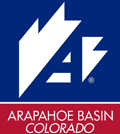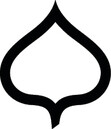Powder Day Workouts
Sports conditioning isn’t just for elite athletes- it plays an important role in injury prevention, and is advantageous for having a long, fulfilling ski season. However, finding the right workout to complement your goals for the winter can be difficult, and oftentimes, a summer and fall full of hiking can mislead outdoor enthusiasts into thinking that their bodies are ready for the rigors and stresses of skiing. And while, obviously, the goal for many of us is to hit the trails year-round, heading to the gym before the flakes start to fall is one of the best ways to improve overall fitness, and ensure as many powder days as possible.
Skip the Run
Don’t get me wrong, running is obviously a great way to get your blood pumping, but it’s not as advantageous for ski-related movements as hitting the gym. Think of an average ski run; you’re in a squat for about 2-5 minutes at a time, putting a lot of force on your legs, plowing through snow, and engaging your legs in eccentric movements as you throw down a turn, or pop over a log. Running can be advantageous for the endurance component of skinning or winter hiking, but running trains long, slow twitch muscles for endurance, as opposed to conditioning big muscle groups- particularly the glutes, quads, and hamstrings- for explosive movement and strength. If you do plan on incorporating running into a winter conditioning program, focus on correct running form to prevent injury, or try shorter, speed-based workouts to target explosiveness.
Move Correctly
Nowadays, elite athletes are frequently subjected to not only a comprehensive training program but are run through a Functional Movement Screen– commonly called an FMS- to determine areas of compromised movement and inefficiencies. The screen tests some pretty basic movement patterns that certified professionals can measure to determine where athletes are say, buckling a knee slightly inward, or are showing a lack of mobility in a shoulder, in order to prescribe a set of not only weight based exercises, but smaller, more targeted corrective movements that can try to strengthen and correct the inefficiency in that area. The idea behind more preventative training like this is to correct nagging, chronic pains in order to strengthen joints and muscle groups, and avoid a major injury or blowout on the hill. FMS assessments have caught on in the world of professional sports, with players in the National Football League, National Hockey League, and ski racers having the FMS as part of their individualized strength and conditioning program. It’s an important overview of how your body moves, and, especially when working with a Certified Strength and Conditioning Specialist, can provide important, individualized information that is helpful for customizing a comprehensive training routine.
Lift Weight
You don’t have to strive for an Ahnold-like physique, but lifting weights is one of the best weighs to strengthen joints, and big muscle groups that will make or break you on a powder day. Try functional exercises- squats, deadlifts, kettlebell swings- that will actually mimic movements that you’ll do on skis or a snowboard to start things off, as opposed to more complicated maneuvers (single-leg pistol squats, for instance), that can actually be detrimental to the intended purpose of strengthening joints and muscles because of many people’s propensity towards doing them incorrectly, and compromising movement in the process (Instagram likes are not worth a strained knee). Squats and deadlifts, in particular, are no nonsense ways to focus on form and get in some high quality reps targeting correct movement patterns and engaging your core. If you’re looking for a few more weight based exercises to add to a routine, check out this article from Men’s Health, which offers some suggestions for powder day workouts, as well.
Featured Resorts

Killington Resort

Hunt Hollow

Pico Mountain

Mammoth Mountain

Palisades Tahoe

Arapahoe Basin

Aspen Snowmass

Sugarloaf

Sunday River

Big Sky


